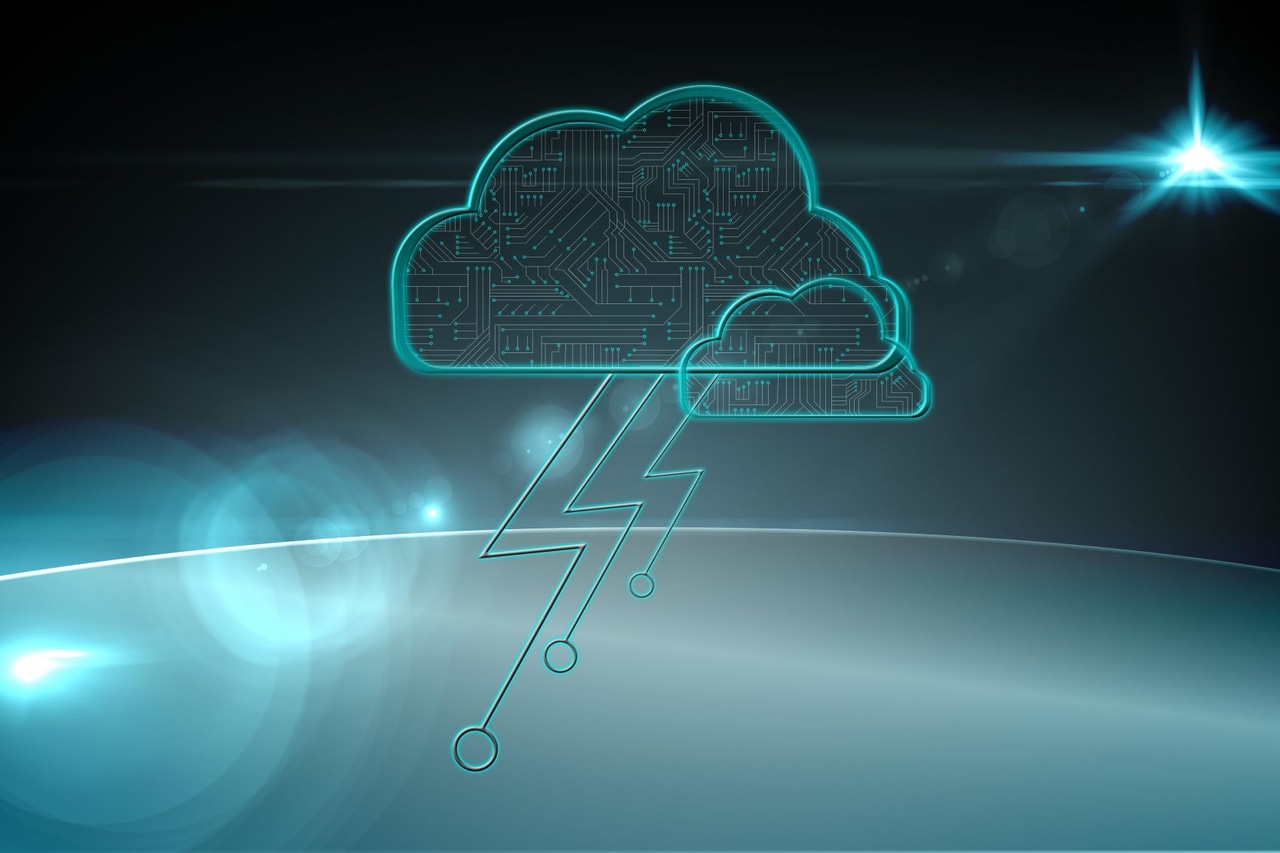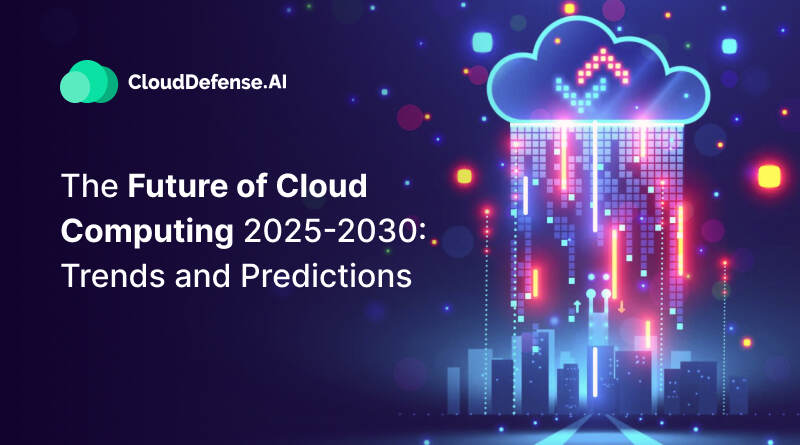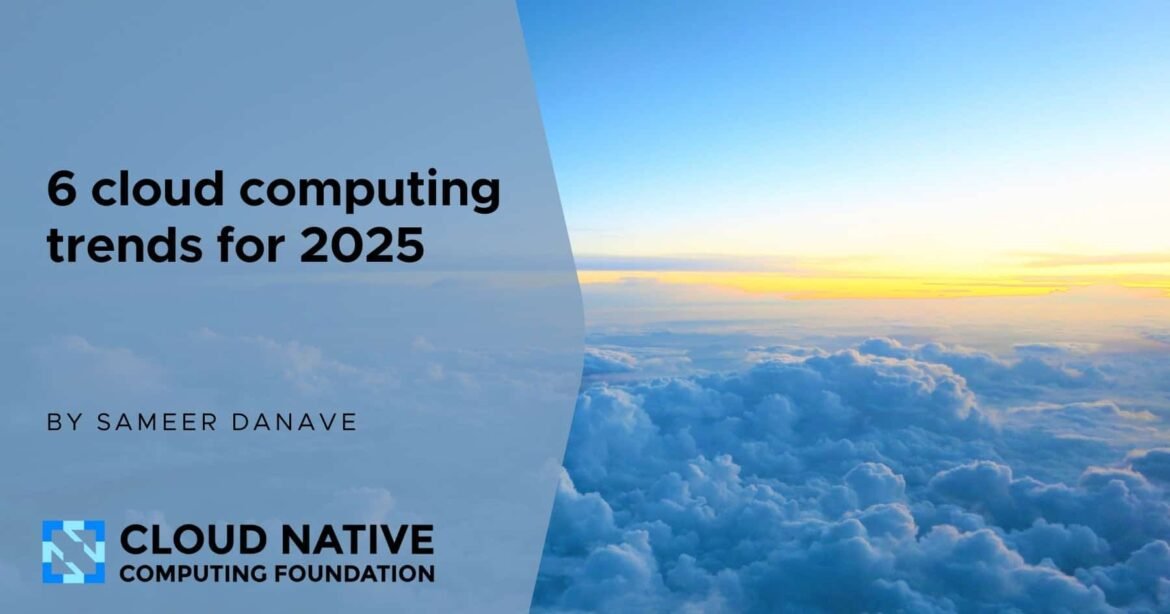
Overview of Cloud Computing in 2025
Definition and Evolution of Cloud Computing
Cloud computing, at its core, can be defined as the delivery of computing services—such as servers, storage, databases, networking, software, and analytics—over the internet (“the cloud”). This technology has transformed how businesses operate, moving away from traditional on-premises infrastructure to flexible, scalable solutions.
Reflecting on its evolution, cloud computing began in the early 2000s, primarily with projects like Amazon Web Services (AWS) launching its services in 2006. Since then, we’ve witnessed a revolution in how resources are consumed, leading to significant advancements such as:
- Increased accessibility to computing resources from anywhere with internet connectivity
- Pay-as-you-go pricing models, which allow companies to scale their expenses in line with growth
- Development of robust cloud applications facilitating agile methodologies
As we look toward 2025, cloud computing has matured into a multi-faceted ecosystem, wherein hybrid and multi-cloud environments dominate. Companies strive to strike a balance between on-premise, private, and public clouds, optimizing their operations for performance and cost.
Current State of Cloud Computing
Today, cloud computing underpins the operations of countless organizations, from startups to large enterprises. Key characteristics of the current state include:
- Rapid Innovation: Continuous improvements in artificial intelligence (AI), machine learning (ML), and automation have reshaped services offered by cloud providers.
- Global Reach: Data centers are distributed globally, ensuring that organizations can host data local to their customer bases for compliance and reduced latency.
- Increased Adoption: Businesses are leveraging cloud services for everything from hosting applications to processing big data, seeing cloud technology as integral to their digital transformation strategies.
In summary, the landscape of cloud computing is dynamic and evolving. As we move closer to 2025, understanding its definition and current state is foundational for anticipating the trends and challenges that lie ahead.

Top Trends Driving Cloud Computing in 2025
Artificial Intelligence and Machine Learning Integration
As we delve into the trends shaping cloud computing in 2025, one cannot overlook the profound impact of artificial intelligence (AI) and machine learning (ML). These technologies are not just buzzwords; they are driving substantial innovation and operational efficiency within cloud platforms.
Imagine AI algorithms analyzing vast datasets hosted in the cloud to provide real-time insights—this capability enables businesses to make informed decisions more rapidly than ever before. Key trends in this integration include:
- Automated Resource Management: AI-driven tools help in optimizing cloud resource allocation, reducing operational costs, and enhancing performance.
- Predictive Analytics: Businesses can now leverage ML models to predict trends, customer behavior, and system performance, creating a proactive approach to operations.
Edge Computing and IoT Expansion
In tandem with AI advancements, edge computing is reshaping the landscape of data processing by bringing computation closer to the data source. This shift is particularly significant in the Internet of Things (IoT) realm, where millions of devices generate immense volumes of data.
The benefits of edge computing include:
- Reduced Latency: By processing data near the source, businesses can achieve quicker response times—critical for applications like autonomous vehicles or real-time health monitoring.
- Bandwidth Optimization: Leveraging edge devices minimizes data sent to the cloud, effectively reducing bandwidth costs and improving overall efficiency.
Quantum Computing Impact on the Cloud
Lastly, quantum computing is emerging as a game changer for cloud computing. Amazon, Microsoft, and Google are developing quantum services that allow users to experiment with complex computations previously deemed impossible.
This technological leap might allow applications in numerous fields, such as:
- Cryptography: Quantum computing could redefine data security protocols within the cloud.
- Complex Problem Solving: Businesses could solve intricate optimization problems at unprecedented speeds, driving innovation across sectors.
In conclusion, the convergence of AI, edge computing, and quantum technology is setting the stage for a transformative cloud computing landscape in 2025. The synergy of these trends ensures that organizations remain agile, efficient, and ready to tackle the challenges of the future.

Security and Privacy Challenges in the Future Cloud Environment
Data Protection and Privacy Regulations
As cloud computing evolves, so do the complexities surrounding security and privacy challenges. One major concern revolves around data protection and privacy regulations. Many organizations today find themselves navigating an intricate web of global compliance standards, such as the GDPR in Europe and the CCPA in California.
For instance, a company in Europe operating under GDPR must ensure that personal data is processed transparently and securely, which can be daunting in a cloud environment where data can be processed across multiple jurisdictions. To effectively address these regulatory challenges, businesses must be proactive in:
- Regularly Reviewing Compliance: Conduct audits and assessments to ensure adherence to local and global regulatory requirements.
- Implementing Data Encryption: Utilizing encryption both in transit and at rest to safeguard sensitive information from unauthorized access.
Enhanced Security Measures in Cloud Services
To combat the growing insecurity surrounding data within cloud services, providers are implementing enhanced security measures. These include multi-factor authentication (MFA), advanced encryption techniques, and innovative threat detection mechanisms that leverage AI.
For example, organizations can minimize risks by:
- Integrating MFA: This provides an additional layer of security, requiring users to present multiple verifying factors to gain access.
- Employing AI-Powered Security: Leveraging AI offers real-time monitoring and alerts for anomalous activities, significantly reducing the risk of breaches.
Risks and Vulnerabilities to Address
Despite improvements, some risks and vulnerabilities persist in the cloud environment. Cyberattacks, insider threats, and data breaches continue to pose significant threats to organizations. Moving forward, companies must prioritize addressing these vulnerabilities by:
- Conducting Regular Penetration Testing: Simulating attacks can help identify weaknesses in security protocols.
- Developing a Comprehensive Incident Response Plan: This ensures that organizations can quickly respond to and recover from security incidents, minimizing potential damage.
In conclusion, as the cloud landscape continues to evolve, so do the security and privacy challenges. By understanding data protection regulations, enhancing security measures, and addressing inherent risks, organizations can elevate their defenses and maintain trust with their clients.

Sustainability and Green Computing Initiatives in Cloud Technology
Renewable Energy Adoption in Data Centers
As businesses increasingly focus on sustainability, the cloud computing sector is also making strides through various green initiatives. A key trend is the adoption of renewable energy sources in data centers. Major cloud service providers are leading the charge by committing to 100% renewable energy, dramatically reducing their carbon footprint.
For instance, companies like Google and Microsoft have invested heavily in solar and wind energy to power their extensive networks of data centers. This transition not only supports the environment but also appeals to eco-conscious customers. Some benefits of renewable energy adoption include:
- Cost Efficiency: Over time, utilizing renewable sources can lead to significant savings on energy bills.
- Brand Reputation: Companies are recognized for their commitment to sustainability, enhancing their public image and marketability.
Carbon Footprint Reduction Strategies
In addition to renewable energy, organizations are implementing comprehensive strategies to reduce their overall carbon footprint. Effective approaches include:
- Energy-Efficient Technologies: Investing in energy-efficient hardware and software solutions can drastically lower power consumption.
- Data Center Optimization: Techniques like virtualization reduce the number of physical servers needed, thus minimizing energy use.
By adopting such strategies, businesses can quantify their impact and showcase their commitment to sustainability in meaningful ways.
Eco-Friendly Data Center Designs
Finally, the design of data centers is evolving to create more eco-friendly operations. Modern data centers are being built with sustainability in mind, incorporating features such as:
- Natural Cooling: Utilizing ambient air and renewable water sources to cool servers instead of traditional air-conditioning units.
- Sustainable Materials: Building structures with materials that have lower environmental impacts, like recycled steel or eco-friendly insulation.
These initiatives showcase the commitment of companies to not only improve their operational efficiency but also contribute positively to our planet. As cloud technology continues to grow, the emphasis on sustainability through renewable energy, effective carbon strategies, and innovative designs will be crucial in shaping a greener future.

Future of Cloud Service Models and Offerings
Serverless Computing Advancements
As we venture further into the future of cloud service models, one of the most exciting developments is the advancement of serverless computing. This innovative model allows developers to focus purely on writing code without the need to manage server infrastructure. Picture it like a dining experience where you simply order your meal, and everything else is handled for you.
Some key benefits of serverless computing include:
- Cost Efficiency: Clients are charged only for the compute time they consume rather than maintaining ongoing server costs.
- Scalability: Applications can automatically scale up or down based on demand, ensuring optimal performance without manual intervention.
AI-driven Automation in Cloud Management
Another significant trend is the increasing role of AI-driven automation in cloud management. We’re witnessing a shift from manual processes to intelligent automation, which not only streamlines operations but also enhances efficiency. For example, AI can be employed to predict resource needs and manage workloads dynamically.
Benefits of AI-driven automation include:
- Proactive Maintenance: By analyzing patterns, AI can anticipate potential failures and resolve issues before they impact users.
- Resource Optimization: Automating resource allocation ensures that applications run securely and efficiently, ultimately lowering operational costs.
Hybrid and Multi-Cloud Solutions
Finally, hybrid and multi-cloud solutions are gaining traction as businesses seek flexibility and redundancy. This approach combines the benefits of public and private cloud environments, allowing organizations to choose the best platform for each workload.
Examples of hybrid cloud use cases include:
- Data Sovereignty: Organizations can store sensitive data on private clouds while taking advantage of the public cloud for less critical operations.
- Disaster Recovery: By distributing workloads between clouds, companies ensure they have backup systems in place, thus enhancing business continuity.
In conclusion, the future of cloud service models is poised for remarkable evolution. Serverless computing, AI-driven automation, and hybrid solutions will play pivotal roles in shaping more efficient, flexible, and cost-effective cloud environments, allowing businesses to thrive in an increasingly competitive landscape.

Impact of 5G Technology on Cloud Computing
High-Speed Connectivity Enhancements
As we analyze the future of cloud computing, the advent of 5G technology emerges as a game changer, especially when it comes to connectivity. With speeds up to 100 times faster than 4G, 5G is set to enhance how cloud services are accessed and utilized. Imagine downloading large datasets or streaming high-resolution content instantly—this is the promise that 5G brings to the table.
Key enhancements associated with 5G connectivity include:
- Low Latency: Reduced lag time means that cloud applications can respond almost instantaneously, making it suitable for real-time applications like gaming and VR.
- Increased Bandwidth: Higher capacity enables more devices to connect simultaneously without performance degradation, facilitating seamless user experiences.
Edge Computing Opportunities with 5G
Coupled with 5G, edge computing is also set to thrive, propelling cloud services into new territories. By processing data closer to where it’s generated—the “edge”—companies can significantly improve performance and reduce reliance on centralized servers.
Here’s why edge computing integrated with 5G is a winning combination:
- Real-Time Processing: Scenarios like autonomous vehicles and smart factories can operate more efficiently, as data can be processed in milliseconds.
- Data-Driven Insights: Businesses can capture and analyze vast amounts of data locally, enabling quicker decision-making while offloading less critical data to the cloud.
Transformative Potential for Cloud Services
Ultimately, the transformative potential of 5G on cloud services cannot be overlooked. We are on the brink of new applications that harness the combined power of cloud and 5G technology, unlocking opportunities across various sectors such as healthcare, education, and smart cities.
Consider these possibilities:
- Healthcare Innovations: 5G could enable remote surgeries where doctors operate robotic instruments in real-time, backed by cloud data sharing.
- Smart City Infrastructure: Enhanced connectivity will support better traffic management, environmental monitoring, and public safety applications driven by cloud analytics.
In summary, 5G technology is set to redefine the landscape of cloud computing, paving the way for high-speed connectivity, edge computing advancements, and innovative cloud services that will elevate user experiences and business operations alike. The synergy of these technologies heralds a new era of digital transformation, making it imperative for organizations to adapt and innovate.

Skills and Workforce Trends in Cloud Computing Industry
Emerging Roles and Job Opportunities
As the cloud computing landscape continues to evolve, so do the skill sets required to thrive in the industry. Emerging technologies and practices are giving rise to new roles that cater to the unique demands of businesses striving to optimize their cloud operations. Some of the in-demand positions include:
- Cloud Data Analysts: Analyzing and interpreting data stored in the cloud to provide actionable insights.
- DevOps Engineers: Facilitating collaboration between development and operations teams to streamline continuous integration and delivery.
- Cloud Security Specialists: Ensuring that cloud infrastructures are safeguarded from threats and vulnerabilities.
With organizations increasingly migrating to the cloud, the job market is brimming with opportunities. Personal anecdotes reveal that many individuals transition to these roles via specialized training programs, making a significant impact on their careers.
Importance of Continuous Learning and Upskilling
In such a fast-paced industry, the importance of continuous learning and upskilling cannot be overstated. Cloud technology is continually advancing, and professionals must stay ahead of the curve to remain competitive. Here are some effective strategies for staying relevant:
- Online Courses and Certifications: Platforms like Coursera, AWS Training, and Microsoft Learn offer valuable resources for acquiring new skills.
- Networking and Community Engagement: Joining cloud-focused forums and attending industry conferences not only enhances knowledge but also fosters connections.
As someone who recently completed an AWS certification, the experience of upskilling has opened numerous doors for career advancement.
Future Workforce Demands in Cloud Technology
Looking ahead, the future workforce demands in cloud technology are poised to be dynamic and multifaceted. Businesses are expected to seek professionals with a blend of technical capabilities and soft skills, such as:
- Critical Thinking: To solve complex problems and innovate solutions.
- Collaboration: Working effectively within diverse teams across various departments.
Moreover, as cloud solutions become more integral to organizations’ operations, there will be a growing need for leaders who can manage cloud strategy and governance.
In conclusion, the cloud computing industry is a fertile ground for growth, driven by emerging roles, the necessity for continuous learning, and evolving workforce demands. By staying relevant through education and skills enhancement, individuals can position themselves for rewarding careers in this ever-changing landscape. The sky is truly the limit!

Conclusion and Predictions
Recap of Key Trends and Developments
As we reflect on the current trajectory of cloud computing, it’s evident that the industry is undergoing remarkable changes underpinned by several key trends. From the integration of artificial intelligence and machine learning that enhances operational efficiencies to the rise of serverless computing that simplifies application deployment, the evolution is both impressive and transformative.
Let’s quickly recap the critical developments:
- 5G Technology: This is revolutionizing connectivity, offering unprecedented speeds and low latency that enhance cloud applications.
- Sustainability Initiatives: Companies are increasingly adopting renewable energy sources and implementing eco-friendly practices in data centers.
- Emerging Workforce Trends: The demand for tech-savvy professionals is growing, along with the need for continuous learning and adaptation to new technologies.
These trends signify a more agile, efficient, and responsible cloud computing landscape.
Forecast for the Future of Cloud Computing by 2025
Looking ahead to 2025, the landscape of cloud computing is predicted to become even more dynamic. A few forecasts to consider include:
- Increased Focus on Security: As data privacy regulations evolve, organizations will prioritize robust security measures to protect their assets and comply with regulations.
- Expanded Use of Edge Computing: With the rise of IoT devices and the demand for real-time processing, edge computing will gain traction, enhancing performance and reducing latency.
- Widespread Adoption of Multi-Cloud Strategies: Businesses will likely adopt multi-cloud solutions in pursuit of flexibility, redundancy, and vendor diversification to avoid dependency on a single provider.
In conclusion, the future of cloud computing is bright, with numerous opportunities on the horizon. As technological advancements reshape the industry, the commitment to innovation and sustainability will remain paramount. The cloud is not just a tool for business; it’s a catalyst for a future where organizations can achieve greater efficiency, resilience, and responsibility in their operations. The journey is just beginning, and your role in this evolving narrative is crucial!

